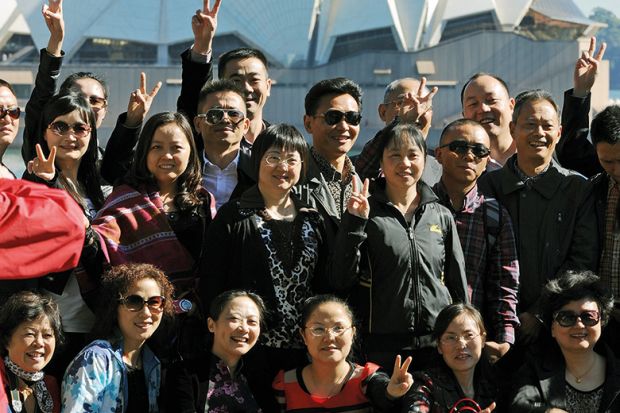Australia’s international education boom cities of Sydney, Melbourne and Canberra are monopolising the ballooning cash flows from foreign students, new trade data suggest.
Figures released by the Australian Bureau of Statistics show that New South Wales, Victoria and the Australian Capital Territory now attract almost three-quarters of international education earnings.
The three jurisdictions have shared almost 80 per cent of the revenue growth over the past three years, banking a combined A$23.8 billion (£13.4 billion) in the last financial year – up from A$15 billion in 2014-15.
This period coincides with an aggressive push by the top-ranked universities of Sydney, Melbourne and Canberra, with international students hoovered up to bankroll research and infrastructure.
Tasmania also doubled its international education revenue over that period, but from a low base. The other three states and the Northern Territory experienced relatively muted earnings growth, with their share of the total pie declining.
Recently released bureau figures also suggest that the industry is failing in its efforts to diversify its source markets. Income from the biggest contributor, China, doubled in three years from A$5.5 billion in 2014-15 to A$11 billion in 2017-18.
Among the major markets, China’s growth rate was surpassed only by Nepal, where revenue surged 124 per cent to A$1.6 billion, and Sri Lanka, where earnings also doubled.
Nepal leapfrogged South Korea, Vietnam, Malaysia and Thailand to become Australia’s third biggest education market. Growth from India rose by a more moderate 62 per cent to A$3.8 billion, pipping the previous record of A$3.2 billion in 2009-10.
Overall education exports rose by 53 per cent over the three years to A$32.4 billion. Despite this, earnings fell from about a quarter of the 140-plus countries that send students to Australia – particularly in eastern Europe, Africa and the Middle East.
Cash flows declined from the major markets of the Philippines and Saudi Arabia, as well as Asia-Pacific neighbours East Timor, Samoa and Vanuatu.
Australia now obtains most of its international education earnings from east and south Asia. The share of revenue from China, its special administrative regions and the Indian subcontinent nations rose from 49 per cent in 2014-15 to 58 per cent last financial year.
后记
Print headline: International cohorts are not diversifying but are congregating




